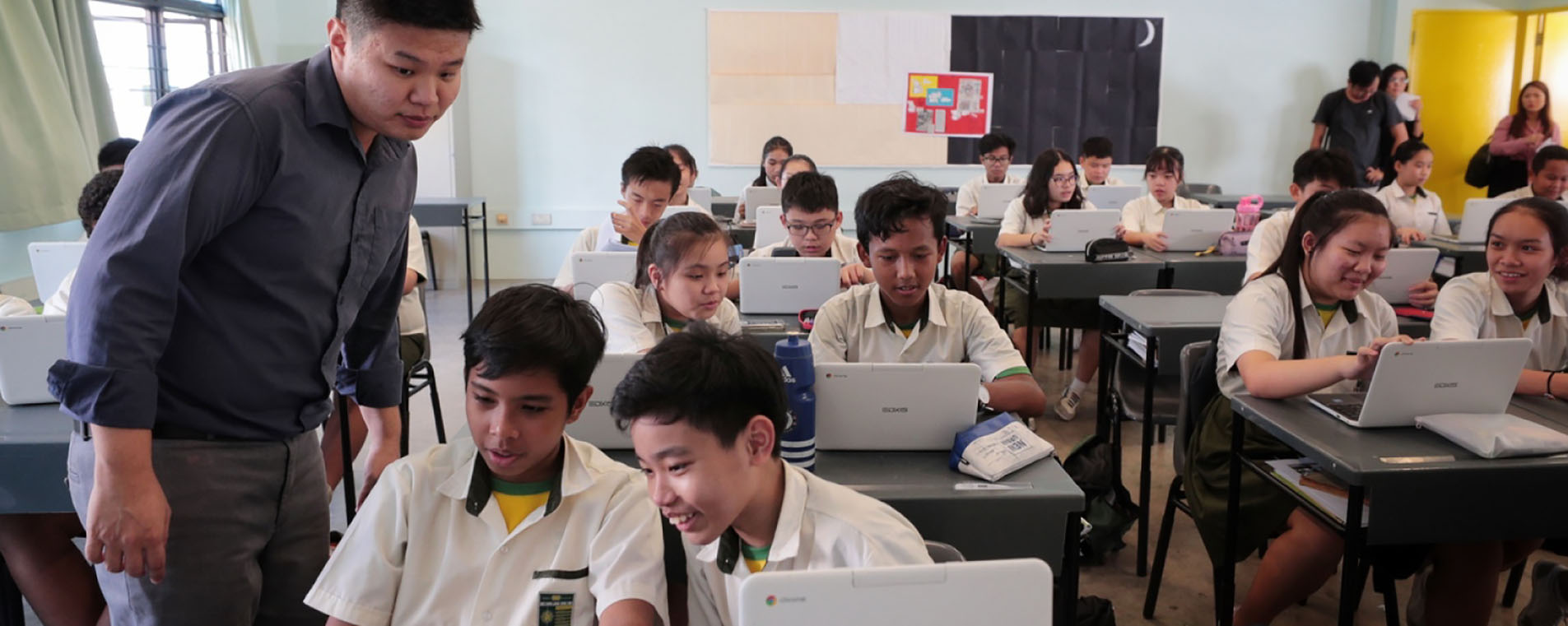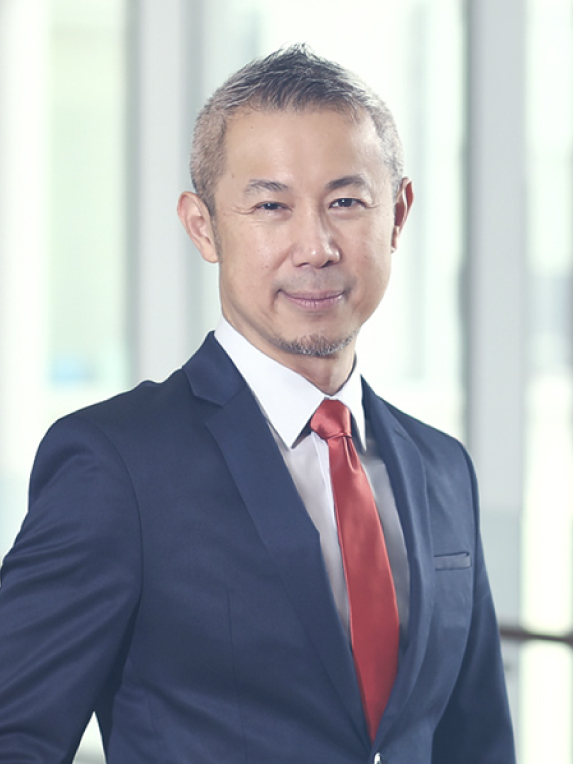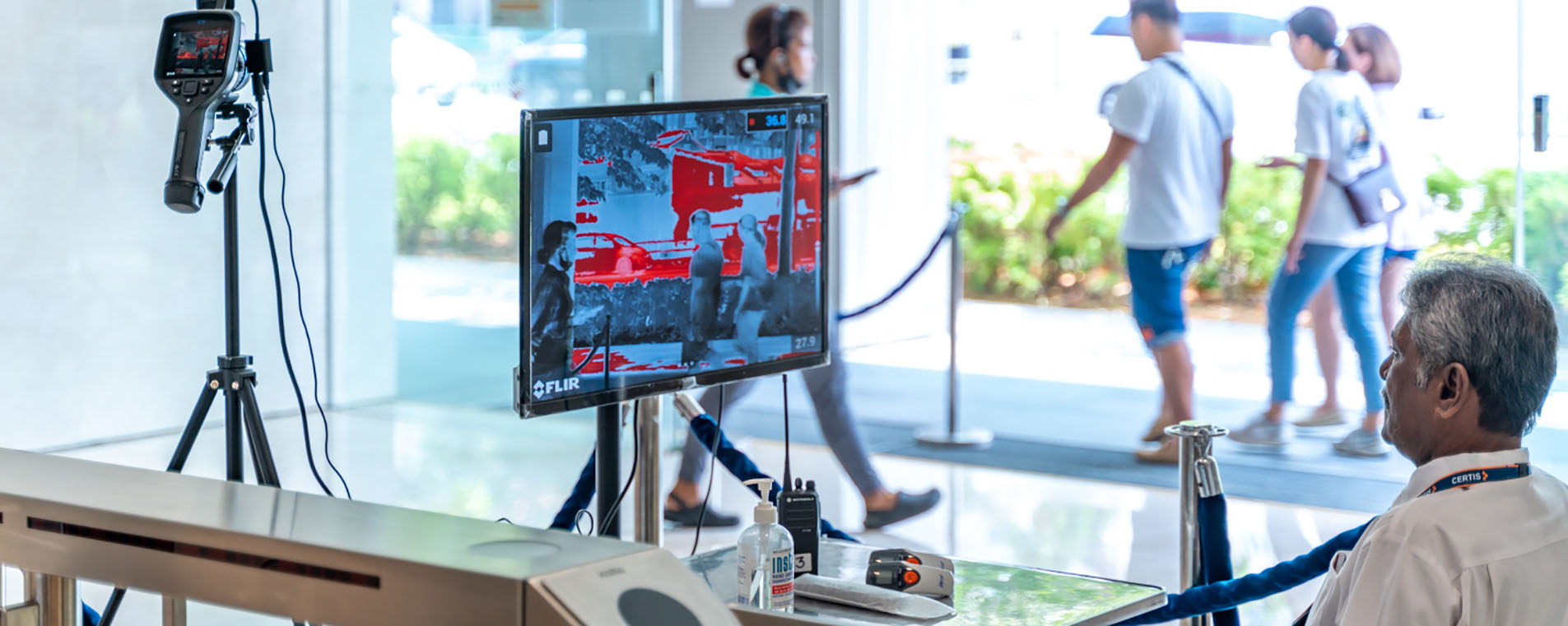
Crazy rich data: 5 ways artificial intelligence will transform life in Singapore
The powerhouse country is reinventing itself as an innovation hub for artificial intelligence.
The powerhouse country is reinventing itself as an innovation hub for artificial intelligence.

Singapore is harnessing AI to push the country ahead. Photo source: Shutterstock
Imagine waking up on a plane headed to Singapore in 2030. Upon landing, you make your way through self-clear immigration powered by AI. Your taxi whisks you to your friend’s home through streets with fast-moving traffic that is free of bottlenecks.
Your friend says that her kids go to a school where no two children read the same textbook—rather, they each receive personalized learning experiences depending on their comfort levels with different subjects. The entire family is in the best of health: new drugs developed in Singapore provide personalized treatments using the information encoded in genomes.
To enable this vision of the future, the government of Singapore unveiled its National AI Strategy in November 2019. The strategy calls for AI to transform the local economy, going beyond mere adoption of AI to fundamentally rethinking business models and making “deep changes” to increase productivity.
“As a small country, Singapore lacks the scale of large markets and R&D ecosystems,” the nation’s Prime Minister Lee Hsien Loong wrote, unveiling the strategy. “But we can make up for this by building up AI research, and working together cohesively across government, industry, and research to develop and deploy AI solutions in key sectors.”
Loong also struck a cautionary note.
“At the same time, we must also anticipate the social challenges that AI will create, by maintaining public trust and building capabilities to manage and govern AI technologies, and guarding against cybersecurity attacks and breaches to data privacy.”
In June 2021, the Singapore government announced plans to increase its spending on AI projects, allocating more than SG$500 million (US$371.87 million) this year to drive the adoption and deployment of AI across the public sector. This figure would account for 13% of the government’s projected total spending on info-communications technology (ICT) procurement, up by almost 10% from 2020.
The Government Technology Agency of Singapore (GovTech), which oversees ICT deployments for the public sector, said AI would enable the government to provide better services, make decisions based on data-driven insights, and optimize operations to enhance productivity.

Smart technologies are being adopted to improve many aspects of daily life, including education. Photo source: The Straits Times
To drive adoption of AI, the agency said it built several central platforms to facilitate typical use cases encompassing video analytics, natural language processing, fraud analytics, and personalization. The goal is to help government agencies slash the cost of deploying AI solutions.
“The central platforms also enable agencies to access common features and enjoy lower cost of management, maintenance, and updating of systems,” GovTech announced.
A nation transformed once again
Singapore is no stranger to massive transformation.
Decades of colonial rule, occupation during World War II, territorial disputes, high unemployment, poor infrastructure, housing scarcity, and a lack of natural resources were some of the challenges facing the newly independent Republic of Singapore in 1965.
The solution was to transform the economy by focusing on manufacturing, export, and wealth management. Rapid industrialization helped to propel the city-state into a high-income country and one of the world’s most competitive economies, with an average of 7.7% GDP growth.

Amid this landscape, AI is particularly relevant as Singapore’s economic future, according to Professor Chen Tsuhan, deputy president of research and technology at National University of Singapore (NUS).
Chen told the Amazon re:MARS team that the Singapore government had aligned its Smart Nation blueprint with plans to improve manufacturing processes and push data-driven initiatives. The overarching goal, Chen says, is to tap smart technologies to improve every facet of life, including governance, healthcare, education, and climate.
While the application of AI is expected to have a profound impact across all of Singapore’s society, there are five areas that are ripe for innovation.
1. Fintech
AI will ensure that Singapore maintains its leadership as a regional financial hub. To that end, Chen explained that NUS, alongside the Monetary Authority of Singapore and National Research Foundation (NRF), recently established the Asian Institute of Digital Finance, a knowledge hub and testbed for digital financial technologies.
Some of the institute’s researchers are developing a system to automatically summarize financial forecasting using textual data and ML algorithms. The institute’s Deep Credit Analytics Lab is developing a natural language processing (NLP) system to extract credit-focused sentiments in media to complement structured financial and behavioral data. The goal is to enhance credit analysis and better discern credit risks.
2. Customer service
The Singapore government’s virtual assistant Ask Jamie is deployed across 70 agency websites to date. Powered by a natural language processing (NLP) engine, the platform responds directly to citizens who pose questions on these sites. When a response can be answered in multiple permutations, Ask Jamie can be trained to pose follow-up questions to refine responses and enhance their relevance to a query.
In December 2020, the Singapore government launched its next-generation chatbot, called Virtual Intelligent Chat Assistant (VICA). The application runs on an AI-powered cloud platform and supports conversational interactions—text and voice—with government ministers and agencies.
Like its predecessor, VICA runs on modern NLP engines and leverages machine learning models to perform advanced analytics on chatbot content. According to GovTech, artificial intelligence enables chatbots to better understand, learn, and interact with citizens.
3. Public health
During the height of the COVID-19 pandemic in 2020, GovTech developed an open-source AI-powered video analytics system to automatically screen temperatures of individuals passing through entrances or “gantries.”

AI-powered VigilantGantry automatically measures visitors’ temperatures as they enter government or office buildings. Photo source: Shutterstock
Called ViligantGantry, the system is similar to a smart home hub that links a regular CCTV camera and thermal scanner to detect and screen the body temperatures of people. The algorithms use facial recognition methodologies to uniquely identify a person. The system then uses criteria like the amount of forehead exposure, along with color segmentation algorithms to provide the intelligence for screening. If the smart system detects that there is not enough skin on the forehead for scanning—for example, a person is wearing a hat—it will ask the visitor to take off their headgear.
In addition to measuring body temperature and performing facial indexing, VigilantGantry can also capture the location, date, and time of screening sessions to support contact tracing purposes.
4. Food production
AI is being tapped to help Singapore achieve its goal of producing 30% of its food needs locally by 2030—up from 10% today. What makes this goal ambitious is that less than 1% of available land in Singapore is designated for agricultural use.
One of the proposed projects uses AI and smartphones at local fish farms to quickly identify healthy rotifers—the microscopic animals used to feed fish larvae. Traditionally, fish farm technicians use a microscope to examine rotifer samples to determine their viability. This is a significant challenge, since three to four billion rotifers are required to feed fish larvae just for the first two weeks of their lives.
GovTech developed a system to automatically examine samples using a machine model trained to distinguish healthy rotifers from unhealthy ones. After refining the model on fish farms, Singapore developers built a mobile app that slashed the time needed to assess rotifer samples from 40 minutes to under 1 minute.

5. Renewable energy
Lacking natural resources, Singapore relies on imports for most of its food as well as energy. The government will use artificial intelligence to better manage deployment of renewable energy infrastructure, specifically, solar panels that have been installed on the rooftops of many apartment buildings.
The amount of electric power generated from sunlight varies depending on weather and time of day. Predicting capacity levels is essential to ensuring a stable grid. Batteries often have to store excess power to be used later when needed. Machine learning algorithms take into account a number of criteria such as weather forecasts and usage patterns to maintain a stable and efficient grid.
More diversity, more success
When asked what’s special about Singapore’s approach and adoption of AI, Chen said the city-state’s multifaceted traits—multiculturalism and multilingualism—have resulted in a rich set of data streams. Singapore has four official languages, at least ten officially recognized religions, and four main ethnic groups: Chinese, Malays, Indians, and other people of European and Asian ancestry.
“Singapore has some of the ‘richest’ data in the world, not just in quantity, but also in terms of diversity,” Chen says. “For example, if your facial recognition system or speech recognition system works in Singapore, then it will work anywhere else in the world.”
Unlike many other countries where the private sector drives AI adoption, the government in Singapore has traditionally set the pace, Chen said. “Digitalizing the government [sector] sets in motion deep changes that will spread to the private and people sectors,” he added.
In June 2021, the government launched an AI Readiness Index, an assessment tool for enterprises to identify where they are in their AI adoption journey. Business leaders are invited to answer nine questions and download a report showing where they stand in terms of AI readiness, and what next steps they can take.
While most governments around the world are still in the early stages of drafting regulatory frameworks for AI, Singapore has adopted a soft law Model AI Governance Framework, a set of recommendations for businesses on addressing key ethical and governance issues when they deploy AI solutions.
“By explaining how AI systems work, building good data accountability practices, and creating open and transparent communication, the Model Framework aims to promote public understanding and trust in technologies,” reads the statement from the Personal Data Protection Commission that oversees the framework.
The National University of Singapore is acutely aware that despite the adoption of this framework, there still exists the chance that growing adoption of AI-based technology could produce dynamics or situations that are frustrating for citizens.
These considerations are currently an area of focus for research at the university. “How do we reap the benefits and rewards of technology without compromising our comfort, privacy, security, and rights?” Chen said.
